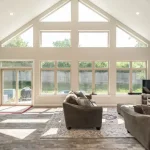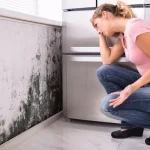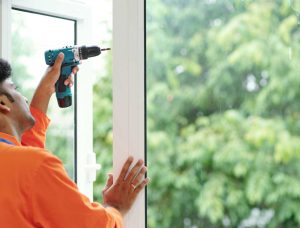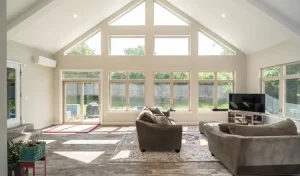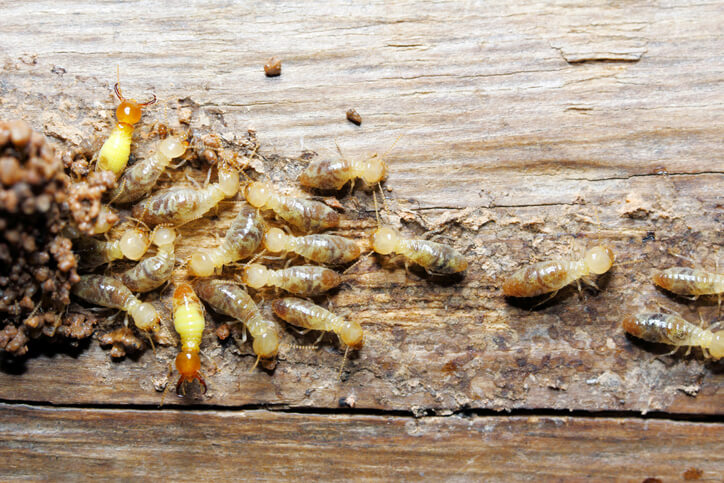
When it comes to maintaining a healthy home environment, we are often more focused on visible threats than those lurking in the shadows. Termites, for instance, fall into this stealthy category. Silent destroyers, they can chew through wood, flooring and even wallpaper, leaving a path of destruction in their wake.
However, identifying a termite infestation early can help limit the extent of damage. This article by pest control experts presents ten signs of termite infestation and explores how you can tackle this issue effectively.
How to tell if you have termite infestation
Not all termite infestations are apparent, which is why it is essential to know the signs. Here are ten indications you might be dealing with these destructive pests. Any pest exterminator will check for these conditions as well –
- Mud Tubes – Termites create these tubes for travel, moisture retention, and protection from predators. They are about the width of a pencil and usually located around the property’s foundation.
- Winged Termites – Often mistaken for flying ants, winged termites or ‘swarmers’ emerge from the nest to mate and establish new colonies. Spotting them inside your home is a clear sign of infestation.
- Discarded Wings – Termites discard their wings after mating. If you notice small, transparent wings around your home, it could signal a termite issue.
- Hollowed or Damaged Wood – Termites eat wood from the inside out, leaving a thin veneer of timber or paint. If you notice your wood sounding hollow or cracking, you may have termites.
- Frass or Termite Droppings – Drywood termites produce wood-coloured droppings as they eat through infested wood. If you notice a small, mound-like accumulation of pellets, it could indicate a termite problem.
- Bubbling Paint or Peeling Wallpaper – Termites can cause damage that appears similar to water damage. This includes bubbling paint or peeling wallpaper, which may suggest a termite infestation within the walls.
- Termite Noises – Termites are quiet creatures, but you might hear them if you listen carefully. An infestation may produce faint clicking sounds coming from your walls or woodwork.
- Tight-fitting doors and difficult-to-open windows – As termites consume wood, their faeces (mud) form a protective habitat that retains heat and moisture. This can cause wood to warp, making doors or windows hard to open.
- Exterior Wood Damage – Termites can damage wood decking and fences. If you notice crumbling or decay, it could be due to termite damage.
- Blowholes in Trees – Some termites create colonies in trees. Look out for tiny holes in the trunk and a hollow sound if you suspect an infestation.
How to get rid of termites
Coming to terms with a termite infestation can indeed be intimidating. The mere thought of these tiny creatures silently destroying your property is unsettling. However, a termite problem is not insurmountable. There are a range of methods designed specifically to combat these pesky invaders. From DIY solutions to professional pest control services, your arsenal is vast.
Set up termite baits
One of the go-to methods of termite pest control is the use of termite baits. These baits consist of cardboard, paper, or other termite-friendly food combined with a slow-acting lethal substance. The baits are strategically positioned around your property to attract termites.
Foraging termites find the bait, consume it, and then share it with their nestmates. This social interaction, characteristic of termites, ensures the slow but efficient dissemination of the lethal substance across the colony, leading to a gradual decrease in termite numbers. While this method requires time and patience, its effectiveness in reducing termite populations is well-documented.
Use termiticides
Termiticides, potent termite-targeting pesticides, are instrumental in warding off termite intrusions. They can be used to create a chemical barrier around your property, making the area inhospitable for these pests. This is how to get rid of termites for good.
However, due to their potency, termiticides should be handled responsibly. Stick to the provided guidelines and consider potential environmental and health impacts. If you want to ensure the safest and most efficient application of these substances, it’s worth enlisting the help of trained pest control experts.
Do a spot treatment
Sometimes, you might encounter a limited, isolated termite presence – a small-scale activity that hasn’t yet blown into a full-scale invasion. Spot treatment can come in handy in these situations. This technique involves directing a termite-exterminating substance right at the epicentre of the infestation. By localising the treatment, you can promptly and effectively eliminate the termites in that area.
That being said, it’s important to understand the limitations of this approach. While it offers a quick solution for minor, contained problems, it falls short when facing extensive infestations that have permeated multiple areas of your property. In those instances, you’ll likely need a more comprehensive pest control strategy.
Use beneficial nematodes
In nature, every creature has a predator that hunts it, and termites are no exception. Beneficial nematodes are minuscule, worm-like organisms that naturally prey on termites. They burrow into termites and release bacteria that quickly kill these pests. These microscopic warriors can be a valuable asset in your fight against termites.
You can purchase beneficial nematodes from garden supply stores or online retailers. Once acquired, they can be applied to infested areas where they will seek out termites and help control their population. This natural, chemical-free method is particularly useful if you’re seeking environmentally friendly pest control solutions.
Use essential oils
Interestingly, nature often provides answers to the problems it creates, including the issue of termite control. Essential oils, including varieties like tea tree, clove, and vetiver, have shown potential to deter these tiny intruders. These aromatic compounds can be directly used on termite-infected areas or serve as a preventative barrier against future infestations, all while lending a pleasant scent to your home.
But it’s important to understand that essential oils aren’t a one-size-fits-all solution to termite infestations. They are better utilised as a part of a wider pest management strategy. Also, remember that research is still ongoing into the potency of essential oils in termite control. Hence, a balanced and mindful approach is recommended.
When should I call pest control experts?
While the above strategies can help control minor termite infestations, larger infestations typically require professional intervention. Pest exterminators have specialised knowledge and access to potent treatments not available to the general public. If you notice big colonies and extensive property damage, it’s time to call pest control services.
Additionally, even after you’ve eliminated termites, it’s a good idea to engage pest control services for regular inspections. Professional pest control experts can provide comprehensive termite pest control, helping you protect your property against future infestations.
Conclusion
Unchecked termite infestations can wreak considerable havoc on your homes, leading to significant repair costs and a whole lot of stress. Familiarising yourself with the signs of a termite infestation and the various strategies on how to get rid of termites is absolutely essential in maintaining the integrity of your property. While you might be able to handle smaller infestations using some of the methods discussed in this article, remember, when it comes to larger invasions and ensuring long-term termite-free peace of mind, calling in professional pest control services is the wisest choice. After all, a home free from these silent destroyers is a home at peace.


